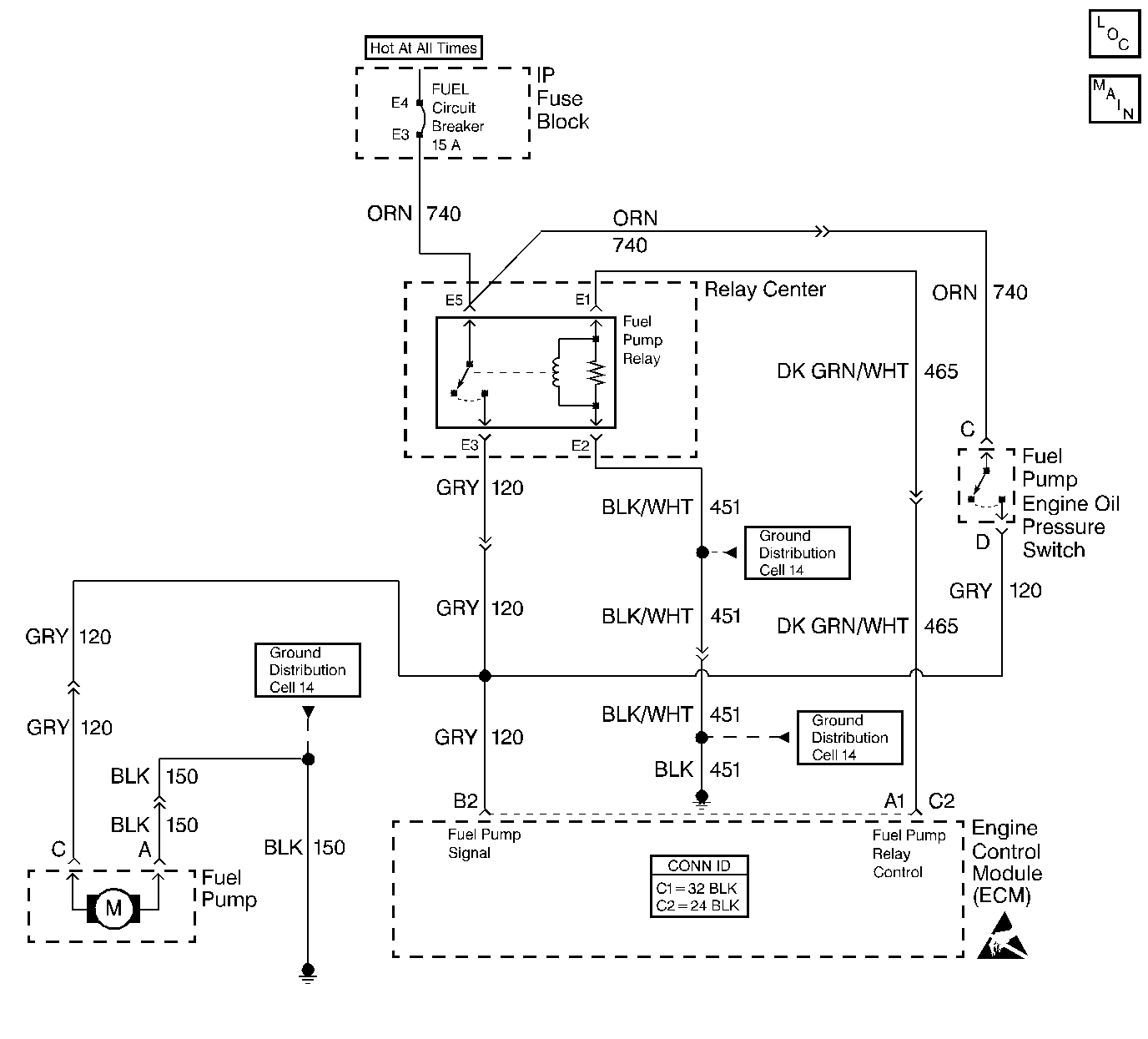
Circuit Description
When the ignition switch is turned ON, the ECM will turn ON the in-tank fuel pump. The pump will remain ON as long as the engine cranks or runs, and the ECM is receives the distributor reference pulses. If there are no reference pulses, the ECM will shut OFF the fuel pump within 2 seconds after ignition ON or engine stops.
The pump delivers fuel to the TBI unit where the system pressure is controlled to about 179 to 220 kPa (26 to 32 psi). Excess fuel is then returned to the fuel tank.
Diagnostic Aids
The ECM has integrated circuits that are fault protected. If a circuit fails, the integrated circuits may not be damaged and will keep the circuit open until the fault has been corrected. When the fault has been corrected, reinstall the ECM and check the circuit. Replace the ECM only if the integrated circuit is still inoperative.
Test Description
The numbers below refer to the step numbers on the Diagnostic Table.
-
This procedure applies direct voltage to run the fuel pump.
-
This step checks the voltage from the battery circuit to the relay.
-
This test determines if there is voltage from the ECM to the relay cavity.
Step | Action | Value(s) | Yes | No |
|---|---|---|---|---|
1 | Did the Engine Cranks But Will Not Run table send you here? | -- | ||
Did the fuel pump operate? | -- | |||
3 |
Is the test lamp ON? | -- | ||
4 | Repair the open in the fuel pump signal circuit. Is the action complete? | -- | -- | |
5 |
Is the test lamp ON? | -- | ||
Is the test lamp ON? | -- | |||
7 | Connect the test lamp between the battery feed circuit and the ground circuit at the relay cavity terminals. Is the test lamp ON? | -- | ||
8 | Repair the open in the fuel pump relay ground circuit. Is the action complete? | -- | -- | |
9 | Replace the in-tank fuel pump. Refer to Fuel Pump Replacement . Is the action complete? | -- | -- | |
10 | Repair the open in the battery circuit. Is the action complete? | -- | -- | |
11 | Repair the open in the fuel pump relay ground circuit. Is the action complete? | -- | -- | |
Does the test lamp stay ON for the specified value? | 10 seconds 2 seconds | |||
13 |
Did you find a problem? | -- | ||
14 |
Did you find a problem? | -- | ||
15 | Replace the fuel pump relay. Refer to Fuel Pump Relay Replacement Is the action complete? | -- | -- | |
16 |
Did you find a problem? | -- | ||
17 | Replace the ECM. Refer to Engine Coolant Temperature Sensor Replacement . Is the action complete? | -- | -- | |
18 | Was the original symptom Engine Cranks But Will Not Run? | -- | ||
19 |
Does the engine continue to run? | -- | ||
20 |
Did you find a problem? | -- | ||
21 | Replace the oil pressure switch. Refer to Fuel Pump and Engine Oil Pressure Switch Replacement . Is the action complete? | -- | -- | |
22 |
Is the test lamp ON? | -- | ||
23 | Replace the in-tank fuel pump. Refer to Fuel Pump Replacement . Is the action complete? | -- | -- | |
24 |
Does the engine start and continue to run? | -- | ||
25 | Allow the engine to idle until it reaches the normal operating temperature. Are any DTCs stored? | -- | Go to the Applicable DTC Table | System OK |
